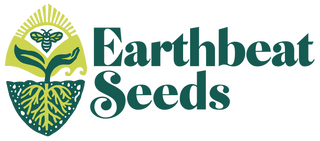*This is fresh seed (not dried) to ensure viability and has been stratified for fall planting, and should be planted as soon as possible upon receipt. Due to delicate nature this seed, it will automatically ship USPS Priority Mail on Monday-Wednesdays only to ensure speedy receipt.
The fleshy white root of American Ginseng is often said to have a human-like form, with the smooth stem of the mature plant directly arising from the ‘neck’. Its Mandarin name for Chinese Ginseng, jen-shen (‘man root’) refers to this humanoid appearance— a Chinese myth originating in Sheni Province begins with villagers hearing a voice calling to them from underneath a plant, and their surprise at the resemblance of the plant’s below-ground parts to a little man. Resultantly, Ginseng became known as tu ching, ‘spirit of the ground.’ Indigenous Americans saw the native species of this plant as possessing restorative qualities, often used as a talisman for rejuvenation and battle. The Cherokee knew it as ‘little man,’ and the Iroquois as ‘man’s thighs and legs separated’ (garent oquen). Older roots are more desirable, with the recommended growth time prior to harvest being at least five years.
In addition to the root, other parts of the plant have been used traditionally. The Creek people would use the green matter of it as a poultice applied to bleeding wounds, and a decoction of its aerial parts was long utilized by the Crow tribe to facilitate childbirth. However, one should take care in usage of Ginseng’s other parts, as the safety of this is unknown.
The genus Panax can be broken down to pan, Latin for ‘all,’ and akos, for remedy, indicating the long history of this plant as acting as a cure-all. Known as an adaptogen, research has shown that American Ginseng may help support concentration and psychological function. Be weary of taking Ginseng in the evening, as ability to help maintain energy levels may affect the night’s slumber. Practice caution in using this plant, as it could interact poorly with pharmaceutical drugs or cause adverse reactions in large doses.
In Eastern states, Panax quinquefolia is often found alongside other precious spring ephemerals like goldenseal, black cohosh, and trillium flowers. Communities common around this plant in Western US include Soloman’s seal, wild ginger, and trillium again. With a native range throughout much of North America, the wild populations of slow-maturing American Ginseng have declined over the years. As it has become popular as a modern supplement, exploitation of this plant has been devastating. This boom began in the 1700s, with thousands of tons of root being exported from the US every year. Traditional Ojibwa methods of harvest involve doing so only after the berries had ripened so their seeds might be sown to replace what had been dug up. Cultivation of this plant in one’s garden decreases the risk of over harvest in the wild, and allows for a potent herb to be at one’s disposal in their own patch.











